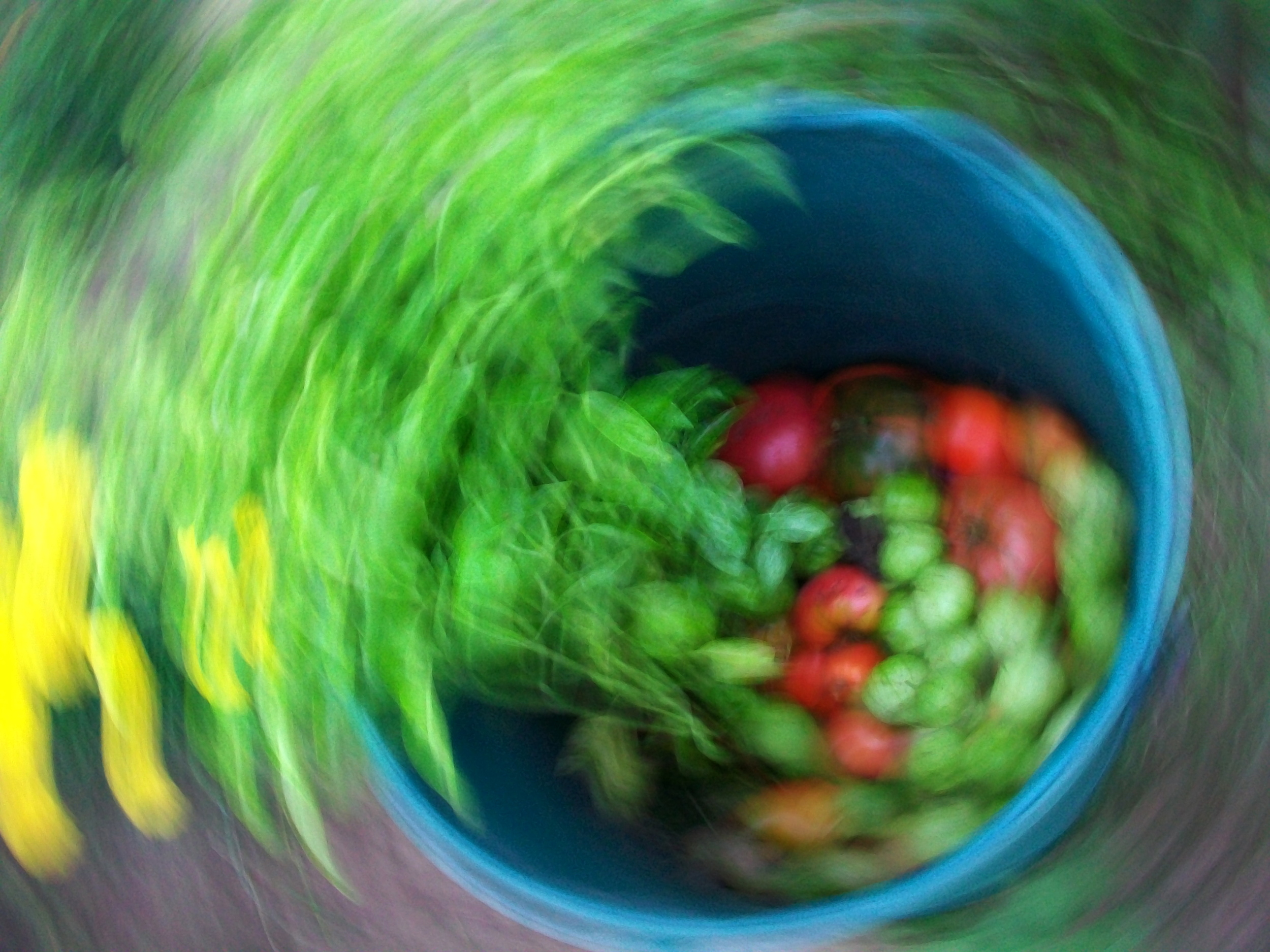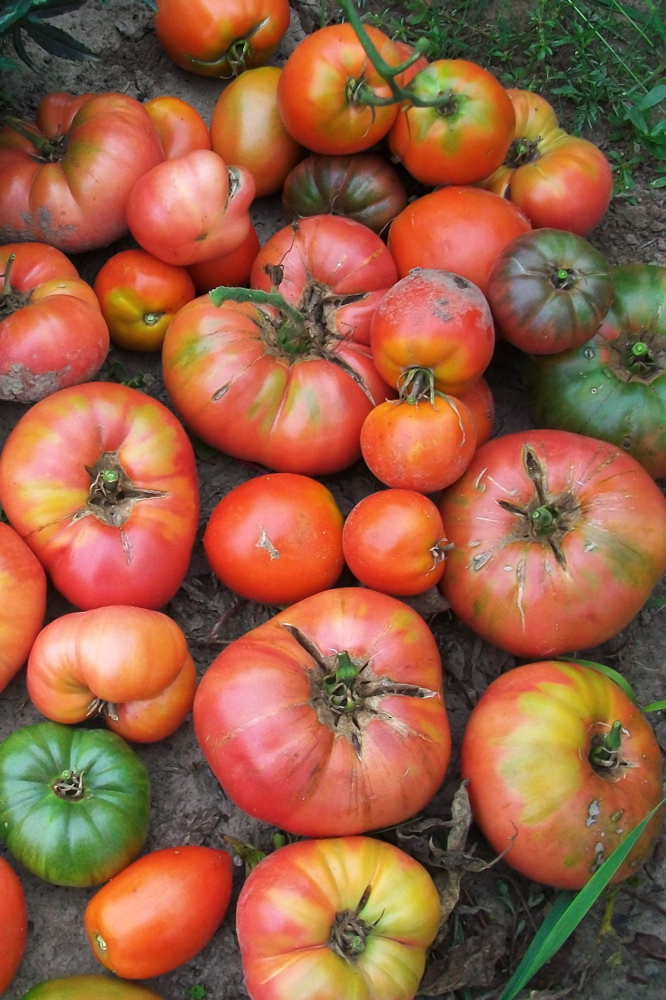Bounty from a Backyard Garden
/ In our home, winter brings a slew of stews, root vegetables, beans and rice. Winter brings homemade pizzas and baked seitan, any chance to turn on the oven, heat escaping metal seams and warming up our kitchen. Winter brings pots of boiling water for pasta, warm and heavy foods to insulate our bones. Winter brings frozen bags of vegetables from last year’s garden, nothing fresh from the frozen ground. Winter brings foods of survival.
In our home, winter brings a slew of stews, root vegetables, beans and rice. Winter brings homemade pizzas and baked seitan, any chance to turn on the oven, heat escaping metal seams and warming up our kitchen. Winter brings pots of boiling water for pasta, warm and heavy foods to insulate our bones. Winter brings frozen bags of vegetables from last year’s garden, nothing fresh from the frozen ground. Winter brings foods of survival.
But from July to September, our table overflows. Dinner means plates of homegrown tomatoes. Dinner means sitting on the porch with a pile of carrots, the dirt brushed off, straight from earth to mouth. There are few things more satisfying than knowing where your food comes from. I’ve known these carrots all their lives. These tomatoes, too.
The best thing about backyard gardens at the start of fall is squeezing out that last round of food, so earlier today I found myself weeding the spinach patch. My husband, Joe, tells me the hoe would be faster, but I prefer weeding the tool-free way: In the doing so, I acquaint myself with each plant, pushing up through the earth in a way that must, from the plant's perspective, feel shockingly brave and remarkable. The last time I paid these spinach plants any mind, they were seeds, with the look and feel of Grape-Nuts, or all-natural cat litter. And now here they are, very obviously spinach, spreading their waxy leaves in welcome to the wide, blue sky.
This is what I love about the garden—the chance to feel what it means to be. To exist in a way that doesn't happen in shopping malls, at the grocery store, in your cubicle, or in your car while you are driving 45 miles an hour in a 30 mph zone just to get where you are going a few minutes faster. Being in the garden makes me forget about cell phones. Being there helps me appreciate the world around me in a way that is active and immediate and steeped in an almost cellular attachment to other living things. Being there reminds me of that necessary connection wrapping itself from person to person like invisible Christmas tree lights, shining bright with hope that better things can happen if we all just dig in a little.
I think of gardening the way some friends describe running. You reach a place where the world falls away, and all that's left are you, and the tangy smell of ripening, and the hard sting of dirt packed tight under your fingernails. The highs and lows of your day melt into an evened thrum, and your breathing does, too, as if your emotional self has been pounded down in a mortar and pestle and all that's left is the essence of you—the essence of what you care about and how you wish to live in the world and all that you find beautiful. All of that exists in every tug of weed, every leaf examined. All of that exists, and multiplies and grows, every time we tend to the well-being of something greater than ourselves.
We don’t live lavishly. But at the dinner table, we feast like kings. “If people knew that broccoli could taste this good, they’d give up steak,” Joe said the other day. Food from your own backyard -- as local as "local food" gets -- tastes nothing like the grocery store clones. They may look something alike. But your taste buds know better. This is a cross-cultural revelation, something people used to know intuitively, back when growing your own food was just what you did because you needed to eat. Everyone should be able to eat this way. Food of substance grown in season, food that’s more food than preservative, food that doesn’t require a can or a cardboard box to get from field to table.
The problem, though: Most gardening seasons, we can’t keep up. Tomatoes, squash, carrots, lettuce, collards, herbs, leeks, broccoli, and okra sprout from our garden in mess-hall quantities.
But we don’t complain. Fall is creeping into the air, in cool nights and shorter days and faded leaves on the trees in the yard. Beyond that lurk scarves and snow and barren branches, cold lungs and boiling pots and a farewell to the carrots and tomatoes. That is, until next year…



